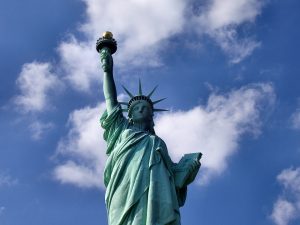
It’s not uncommon for metal objects and surfaces to corrode. Corrosion occurs when metal reacts to environmental elements, such as oxygen or moisture, resulting in gradual degradation. It literally eats away at the metal, creating visible holes while changing the metal’s chemical composition in the process. While all forms of corrosion have this effect, galvanic corrosion is particularly problematic because of its ability to cause varying levels of degradation between two metals.
What Is Galvanic Corrosion?
Also known as bimetallic corrosion or dissimilar metal corrosion, galvanic corrosion is characterized by the corrosion of two different metals are exposed to an electrolyte. When this occurs, one of the metals begins to corrode, while the other metal remains protected. The metal that corrodes during galvanic corrosion is known as the node. The metal that doesn’t corrode is known as the cathode.
A common example of galvanic corrosion is the Statue of Liberty. Originally built in Paris during the 1800s and later moved to New York City, it suffered from extensive damage caused by galvanic corrosion. When the National Park Service (NPS) inspected the Statue of Liberty in 1981, they discovered large areas of rust on its copper exterior. This was due to the fact that the Statue of Liberty’s copper exterior touched its iron armature.
Ways to Prevent Galvanic Corrosion
Although it’s relatively common, there are multiple ways to prevent galvanic corrosion, one of which is to separate the two metals with a non-conductive material. If there’s a layer of non-conductive material between the two metals, electricity won’t be able to travel between them, thus eliminating the risk for galvanic coupling.
Unfortunately, separating the metals with a layer of non-conductive material only works if the newly added layer remains intact. To protect the Statue of Liberty’s from galvanic corrosion, engineers added a layer of resin between the copper and iron structures. This layer eventually failed, however, allowing the Stature of Liberty’s copper exterior to make direct contact with its iron armature.
A more effective way to prevent galvanic corrosion is to ensure that neither metal is exposed to an electrolyte. If the metals are coated with paint or varnish, they will typically remain protected from electrolytes. In instances where adding a protecting coating to both metals isn’t possible or feasible, the coating should be added to the cathode for the highest level of protection. Another way to prevent galvanic corrosion is to perform electroplating on the anode and/or cathode.
